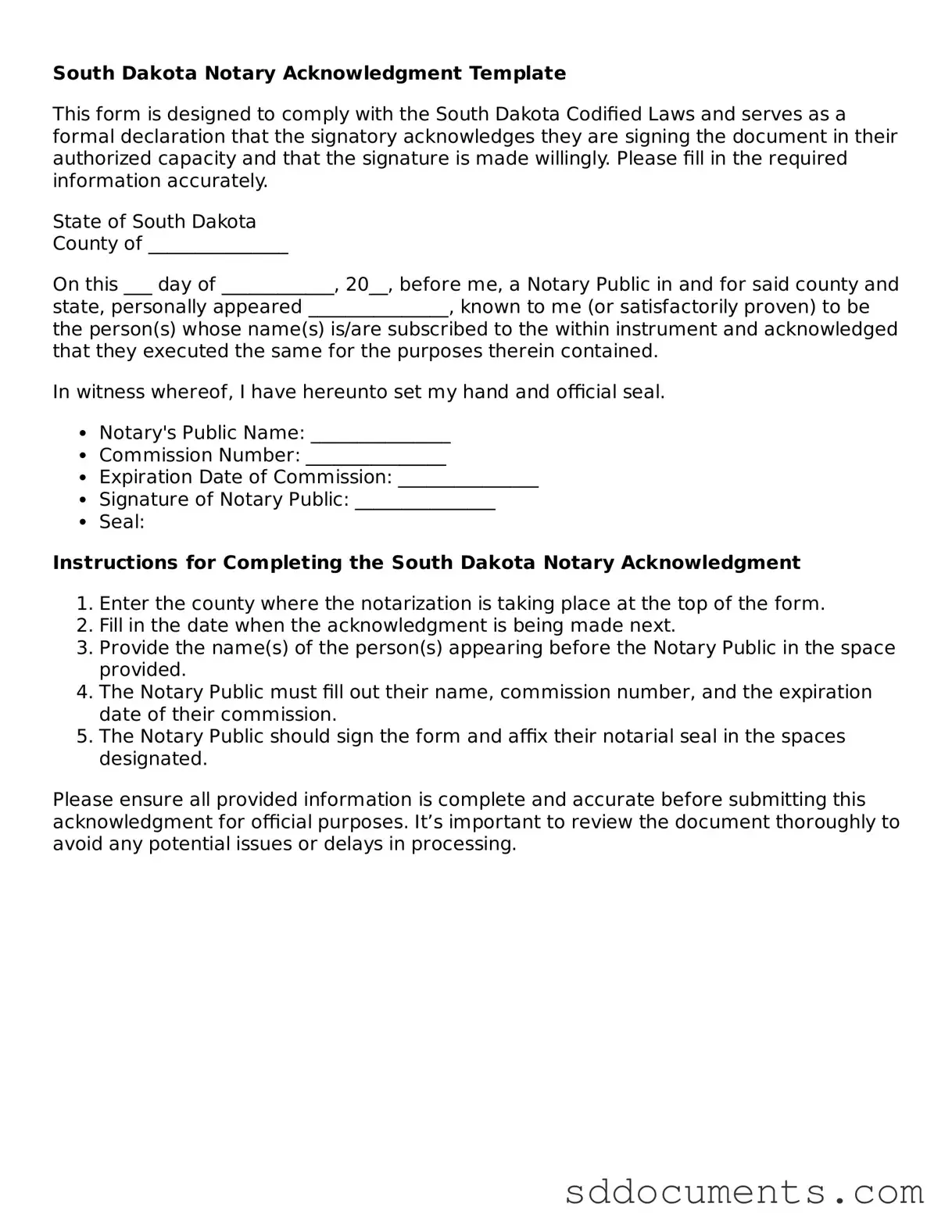Free Notary Acknowledgement Template for South Dakota
The South Dakota Notary Acknowledgement form is a legal document used to verify the identity of individuals signing a document, ensuring that their signatures are genuine and made willingly. This form is essential for various legal transactions, providing a layer of protection against fraud. To get started with your own Notary Acknowledgement form, click the button below.
Customize Document Online
